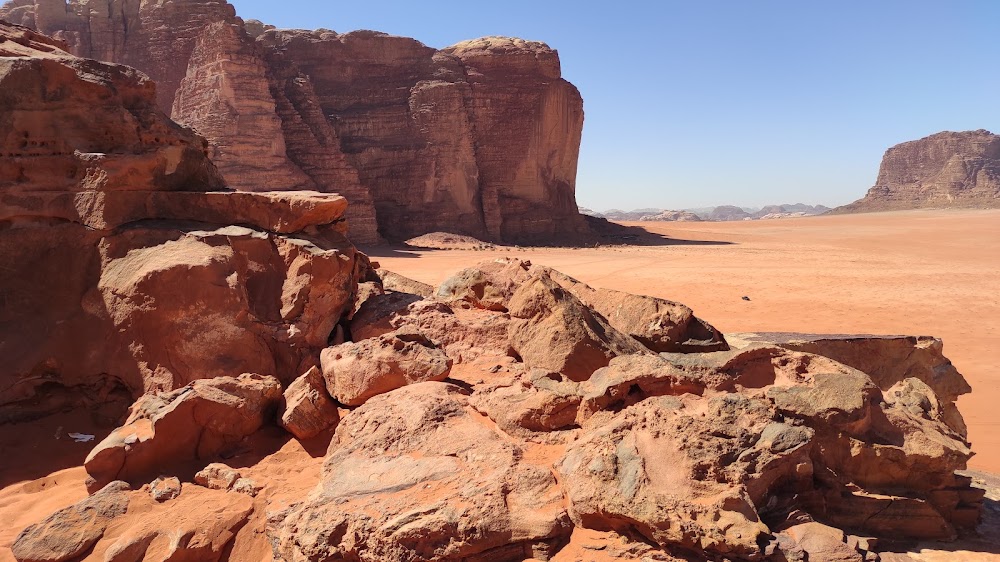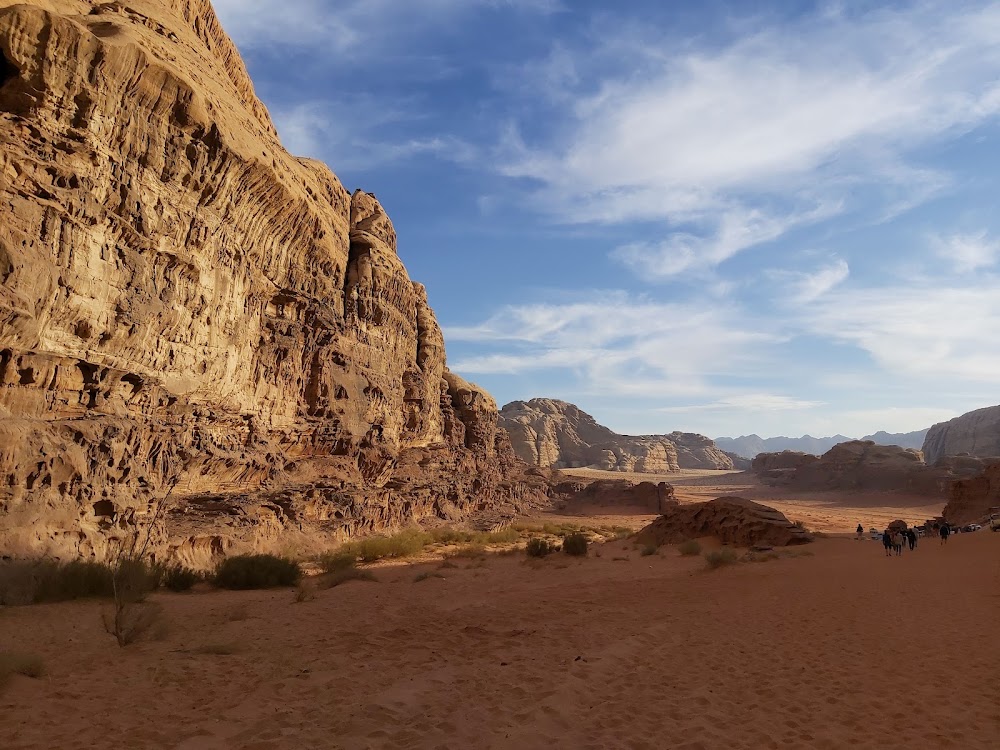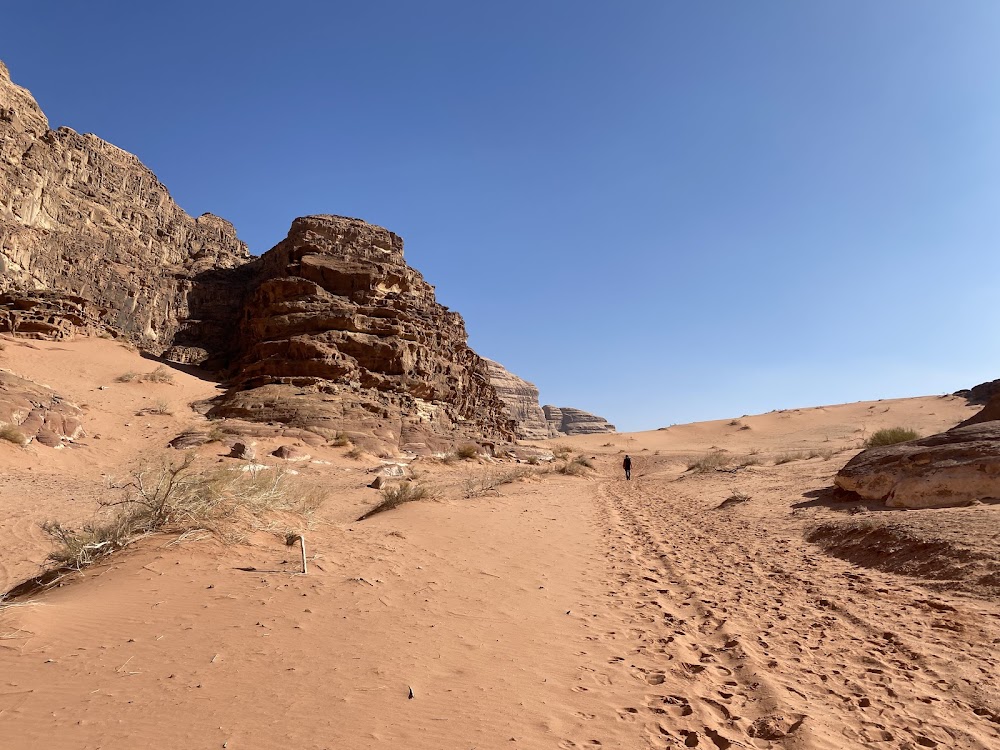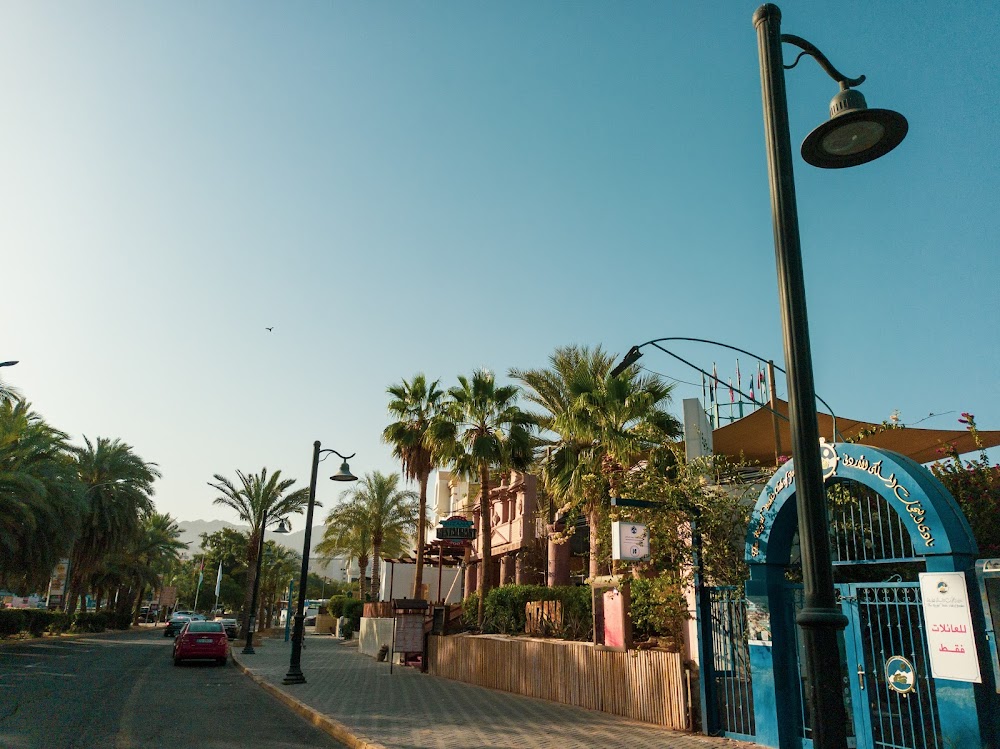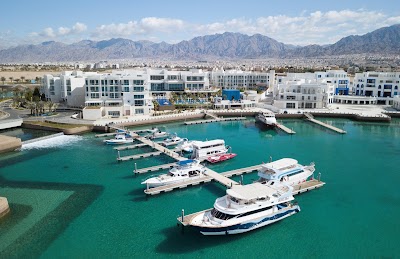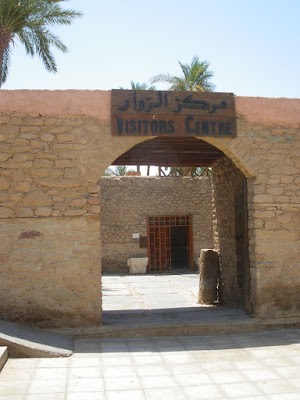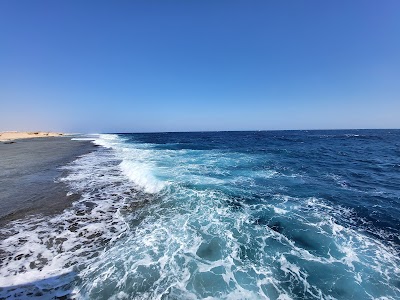Wadi Rum (وادي رم)
Overview
Wadi Rum Protected Area, located in Aqaba, Jordan, is a stunning desert landscape renowned for its dramatic sandstone mountains, ancient rock carvings, and expansive stretches of red sand. Often referred to as the "Valley of the Moon," Wadi Rum has been inhabited for thousands of years, holding immense cultural, historical, and natural significance.
Geological Marvel
The story of Wadi Rum begins with its geological formation, which dates back over 30 million years. The forces of nature have sculpted the sandstone and granite rock formations into the breathtaking shapes that characterize the area today. These towering cliffs and deep valleys, shaped by centuries of erosion, create mesmerizing scenery that draws visitors from all corners of the globe.
Cultural Heritage
Throughout history, Wadi Rum has served as a cradle of human civilization. Early inhabitants, believed to date back to prehistoric times, left behind petroglyphs and inscriptions on the rocks, offering insight into their lives. These carvings depict animals, human figures, and ancient scripts, with some of the most remarkable examples found in Khazali Canyon and the Anfashieh inscriptions.
Historical Significance
Wadi Rum gained particular prominence during World War I, when British officer T.E. Lawrence, famously known as Lawrence of Arabia, operated from this desert during the Arab Revolt against the Ottoman Empire. The captivating landscapes he described in his writings have inspired many filmmakers, making Wadi Rum a backdrop for iconic movies such as "Lawrence of Arabia" and "The Martian."
Protected Area Status
To safeguard its natural and cultural heritage, Wadi Rum was designated as a protected area by the Jordanian government in 1998. Spanning 720 square kilometers, the site is managed by the Aqaba Special Economic Zone Authority, which works to preserve its unique ecosystem and historical artifacts. In 2011, Wadi Rum was inscribed as a UNESCO World Heritage Site, acknowledging its outstanding universal value.
Collaboration with Bedouin Communities
The creation of the protected area involved a collaborative effort between local Bedouin communities and various organizations. These communities, who have lived in harmony with the harsh desert environment for generations, play a pivotal role in conservation efforts. Their traditional knowledge and sustainable practices are vital to maintaining the ecological balance and cultural integrity of Wadi Rum.
Tourism Development
Wadi Rum's development as a tourist destination has been carefully planned to minimize environmental impact. Campsites and eco-lodges have been established using natural materials, seamlessly blending into the landscape. These accommodations provide visitors with an authentic experience while ensuring that the delicate desert ecosystem remains undisturbed.
Adventure and Exploration
Tourism in Wadi Rum is centered around adventure and exploration. Visitors can embark on jeep tours, camel treks, and hiking expeditions to discover the desert's beauty. The iconic rock formation known as the "Seven Pillars of Wisdom," named after T.E. Lawrence’s book, is a popular attraction. Additionally, climbers flock to Wadi Rum for its challenging routes, with towering cliffs providing an exhilarating backdrop for thrilling climbs.
Stargazing Experience
One of the magical experiences Wadi Rum offers is stargazing. Thanks to minimal light pollution, the clear night sky unveils a blanket of stars, creating a serene escape from the hustle and bustle of city life.
Sustainable Tourism Practices
To ensure that Wadi Rum remains a pristine natural wonder for future generations, sustainable tourism practices are emphasized. Guidelines regulate visitor numbers, waste disposal, and resource usage. Environmental education programs are also conducted to raise awareness among locals and tourists about the importance of conservation.
Wadi Rum Protected Area stands as a testament to the relentless power of nature, the resilience of ancient civilizations, and the harmonious coexistence between humans and the environment. Its ongoing preservation efforts exemplify a collaborative success story, demonstrating that with careful planning and respect for both nature and culture, treasured landscapes like Wadi Rum can be enjoyed and safeguarded for generations to come.



